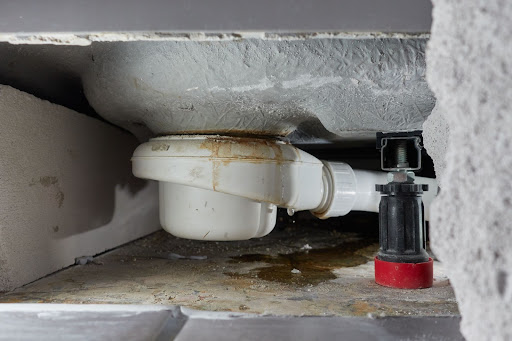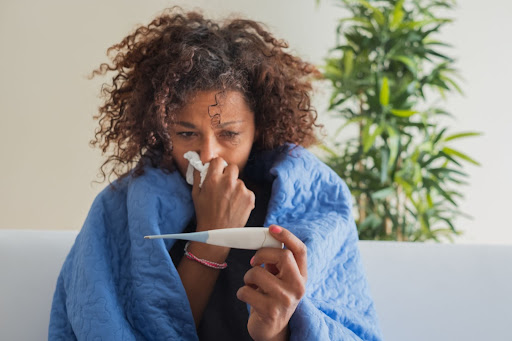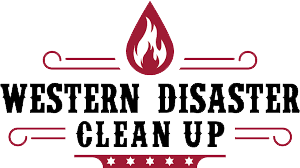Home is where we feel safest, a sanctuary where we can escape the chaos of the outside world – so what happens when sewer damage compromises that? The mere thought can be overwhelming, raising immediate concerns about health, safety, and the integrity of your home.
Sewer damage from your sewage system is not just an inconvenience; it’s a serious issue that poses both immediate and long-term risks. The aftermath can be devastating, whether caused by a burst pipe, a stubborn blockage, or a natural disaster. The question then arises: Is staying in a house with sewage damage safe?
The simple answer is no. In today’s blog, we explain why. First, we’ll look at what causes sewage damage; then, we’ll go over the health problems that sewage damage can cause. Our goal is to provide you with the information you need to make informed decisions, safeguard your health, and restore your peace of mind.
What Causes Sewage Damage?
Understanding the root causes of sewage damage is the first step in preventing future incidents and assessing the risks involved. Let’s examine the causes of sewage damage and the different types of sewage damage you might encounter.
Common Causes of Sewage Damage
- Burst pipes: A burst pipe is one of the most frequent causes of sewage damage. This can happen for various reasons, such as freezing temperatures, old age, or high water pressure.
When a pipe bursts, it can lead to a significant amount of water flooding your home, and if the pipe carries sewage, the situation becomes even more critical. - Blockages: Clogs in your sewage system can lead to backups, causing sewage to flow back into your home. Everyday items that cause blockages include grease, hair, and non-flushable items like wipes and sanitary products.
- Natural disasters: Events like heavy rainfall, hurricanes, and floods can overwhelm sewage systems, leading to backups and damage. In such cases, the scale of the problem often extends beyond individual homes, affecting entire communities.

Types of Sewage
- Clean water: This is water that doesn’t contain contaminants. While not directly harmful, clean water can still cause damage to your property and belongings. It becomes a concern when it comes into contact with electrical systems or promotes mold growth.
- Greywater: This type of water contains some level of contamination and comes from sources like sinks, washing machines, and bathtubs. While not as dangerous as blackwater, greywater can still pose health risks if not handled properly.
- Blackwater: This is the most hazardous type of sewage, containing human or animal waste, harmful bacteria, and other pathogens. Contact with blackwater poses immediate health risks and requires professional cleanup.
Immediate Health Risks
When it comes to sewage damage, the immediate health risks are a primary concern that should not be taken lightly. They are the primary reason your home isn’t safe to live in until it’s restored. Sewage water is far from clean; it’s a breeding ground for various types of bacteria, viruses, and parasites.
Bacterial Infections
- E. Coli: One of the most common bacteria found in sewage, E. coli can cause severe gastrointestinal issues, including diarrhea and abdominal cramps.
- Salmonella: This bacteria can lead to salmonellosis, a condition characterized by diarrhea, fever, and abdominal cramps.
- Staphylococcus: Commonly known as staph, this bacteria can cause skin infections and, in severe cases, can lead to conditions like pneumonia.
Viruses
- Norovirus: Known for causing the “stomach flu,” norovirus can be present in sewage and can lead to severe vomiting and diarrhea.
- Hepatitis A: This virus affects the liver and can be contracted through contact with contaminated water or food.
- Rotavirus: Particularly dangerous for infants and young children, rotavirus can cause severe diarrhea and dehydration.
Parasites
- Giardia: This parasite can cause giardiasis, a condition that leads to diarrhea, gas, and stomach cramps.
- Cryptosporidium: Known for causing cryptosporidiosis, this parasite can lead to watery diarrhea and is highly resistant to chlorine.
How Contact Leads to Disease
- Skin contact: Simply touching contaminated water can lead to skin infections. Open wounds are particularly susceptible.
- Ingestion: Accidentally swallowing even a small amount of contaminated water can result in gastrointestinal issues.
- Inhalation: In some cases, harmful microorganisms can become airborne, posing a risk when inhaled.
- Secondary contact: Contaminated objects or surfaces can also be a source of infection. For example, if a pet comes into contact with sewage, it can become a carrier of harmful bacteria.

Long-Term Health Risks
While the immediate health risks of sewage damage are alarming, it’s crucial not to overlook the potential long-term consequences. These can manifest days, weeks, or even months after the initial incident, making it critical to immediately take care of sewage damage.
Mold Growth
- Respiratory issues: Mold spores can irritate the lungs and lead to chronic respiratory problems, especially in individuals with asthma or allergies.
- Skin irritation: Prolonged exposure to mold can cause skin rashes and irritation.
- Cognitive effects: Some studies suggest that certain types of mold can affect cognitive functions, leading to symptoms like memory loss and reduced attention span.
- Hidden dangers: Mold often grows in places that are not immediately visible, such as behind walls or under floors, making it a lingering threat.
Exposure to Harmful Chemicals
- Volatile organic compounds: Sewage damage can release VOCs, leading to headaches, dizziness, and long-term liver or kidney damage.
- Heavy metals: Sewage can contain heavy metals like lead and mercury, which can accumulate in the body over time and lead to neurological issues.
- Endocrine disruptors: Chemicals like phthalates and bisphenol A (BPA) can interfere with hormone regulation, potentially leading to reproductive issues and developmental problems in children.
- Carcinogens: Some chemicals found in sewage are known carcinogens that can increase the risk of developing cancer over time.
How Long-Term Exposure Affects Health
- Bioaccumulation: Harmful chemicals can accumulate in the body over time, leading to chronic health issues.
- Immune system: Long-term exposure can weaken the immune system, making you more susceptible to other illnesses.
- Mental health: The stress and anxiety associated with living in a contaminated environment can have lasting psychological effects.
When Is It Safe to Return Home?
As we can see, the effects of sewage damage will render your home uninhabitable until disaster restoration professionals have restored your home. But when exactly is it safe to return?
Unfortunately, the answer to this question is not straightforward. It actually depends on several factors.
- Disaster restoration cleanup is completed. This ensures that all contaminated areas have been sanitized and restored.
- The air quality has been tested. After the cleanup, air quality tests should be conducted to ensure there are no lingering harmful substances like mold spores or VOCs.
- The water has been tested. If your water supply was affected, tests should confirm that it is free from contamination before you return.
- Your home has structural integrity. Ensure that the home’s structural integrity has been assessed and confirmed to be safe, especially if there was flooding or water damage to foundational elements.
- There’s no odor left. The absence of foul odors is generally a good sign that bacterial and chemical contaminants have been successfully removed.
Additionally, you’ll want to ensure that the disaster restoration is conducted by certified professionals specializing in sewage and water damage restoration. Your insurance might also want to assess your home to ensure that all necessary repairs have been completed satisfactorily.
Preventative Measures for the Future
While dealing with sewage damage is undoubtedly stressful, it’s also a learning experience that prompts us to take proactive measures for the future. After all, prevention is better than cure.
Regular maintenance helps us catch things before there’s sewage damage. Your pipes, drains, sump pump, and garbage disposal should all be maintained regularly. It’s also a good idea to have sewer line checks, water quality tests, and electrical system checks conducted for you. The professionals can catch things we don’t see, simply because they are trained to see them.
Hopefully, if you’re dealing with sewage damage now, knowing what to do in the future will give you peace of mind that this can be prevented from happening again.
Call Western Disaster Clean Up Today
We understand that dealing with sewage damage is a stressful and overwhelming experience that no one wants to go through. Your health and safety are paramount, so acting quickly and wisely is crucial. If you’re facing sewage damage in your home, don’t leave things to chance.
Choose a service you can trust — choose Western Disaster Clean Up. Our certified professionals specialize in sewage and water damage restoration, ensuring that your home is not just cleaned but fully restored to a safe and healthy environment. From immediate cleanup to long-term preventive measures, we’ve got you covered every step of the way.
Call Western Disaster Clean Up at 385.955.4126 to schedule your emergency restoration services today. Let us take care of you during this challenging, stressful time, so we can restore your home and get you back to living your best life.

